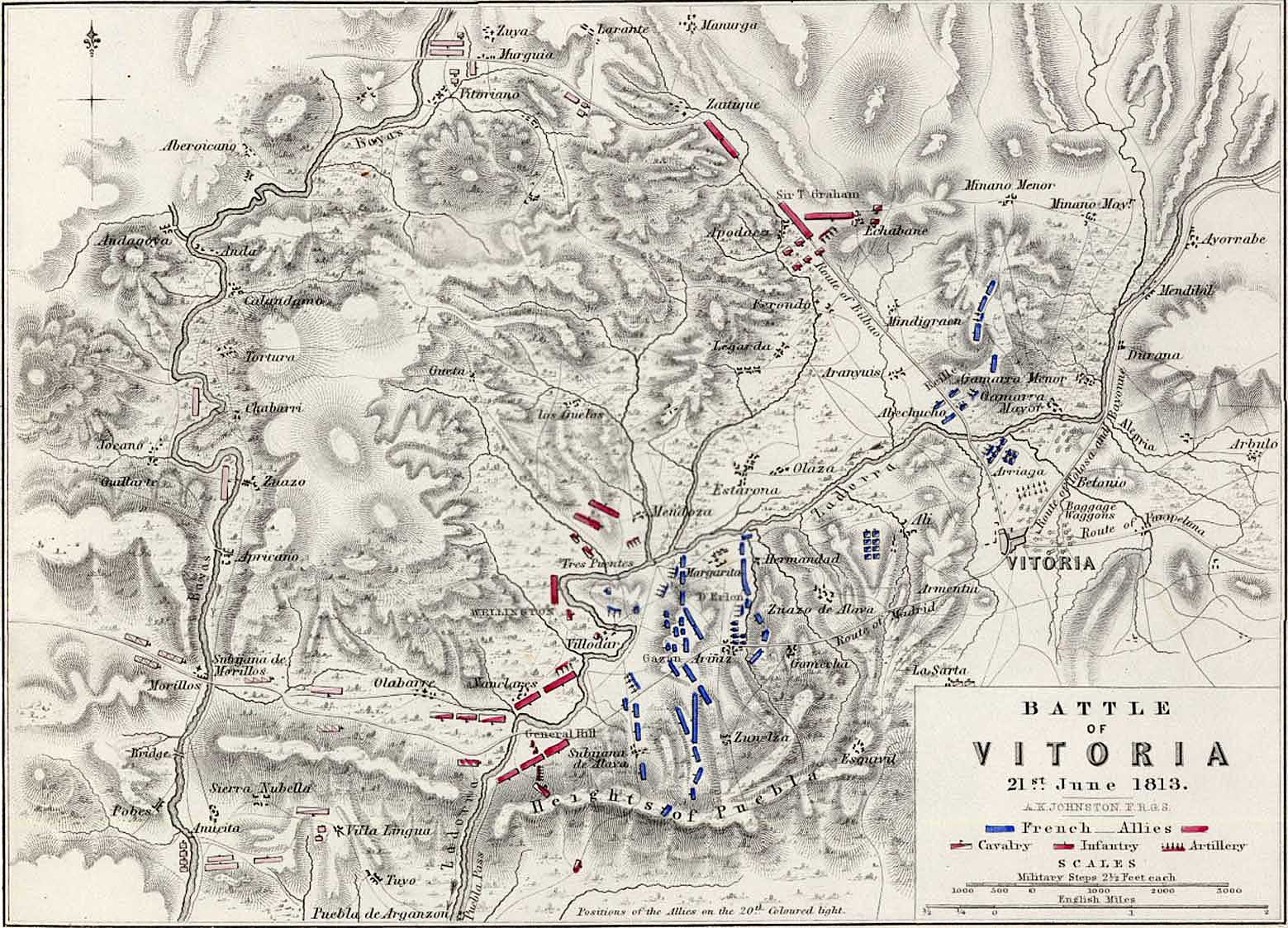
PENINSULAR WAR 1807-1814
page still in the making
1813
11/05/1813 Castro-Urdiales

The monument to the Allied victory in the centre of Vitoria, on the plaza de la Virgen
Blanca.
(Please read it in HD!)
The statue of Don Miguel Ricardo Maria Juan de la Mata Domingo Vincente Ferre Alava de Esquivel on the monument.
A little visit to the military museum of Vitoria, where you can
find some treasures like king Joseph's and marshal Jourdan's saddlecloths, the
buttons of the latter's uniform, as well as his hat.
Many other interesting pieces and some diorama's of the battle. An interesting
model of the 112 guns ship of the line Santa Ana, which took part in the battle
of Trafalgar.
Certainly well worth a visit.
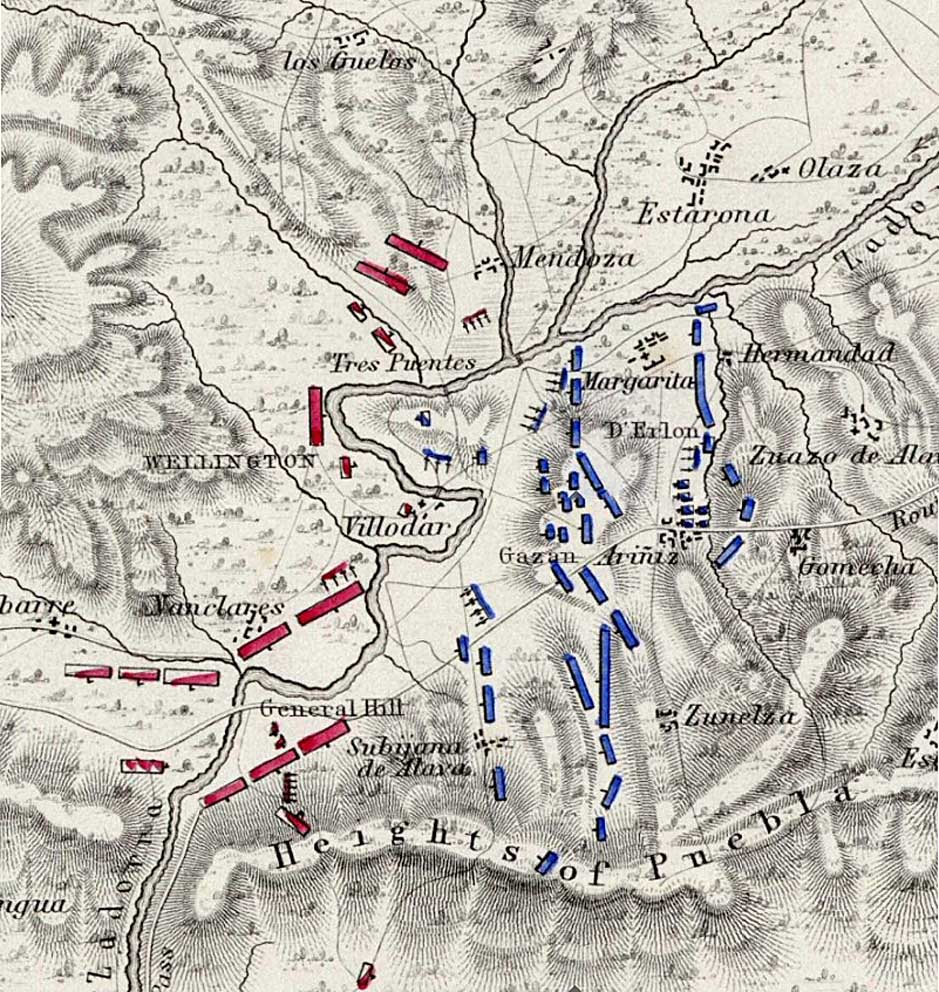
07/07-08/09/1813 siege of San Sebastian
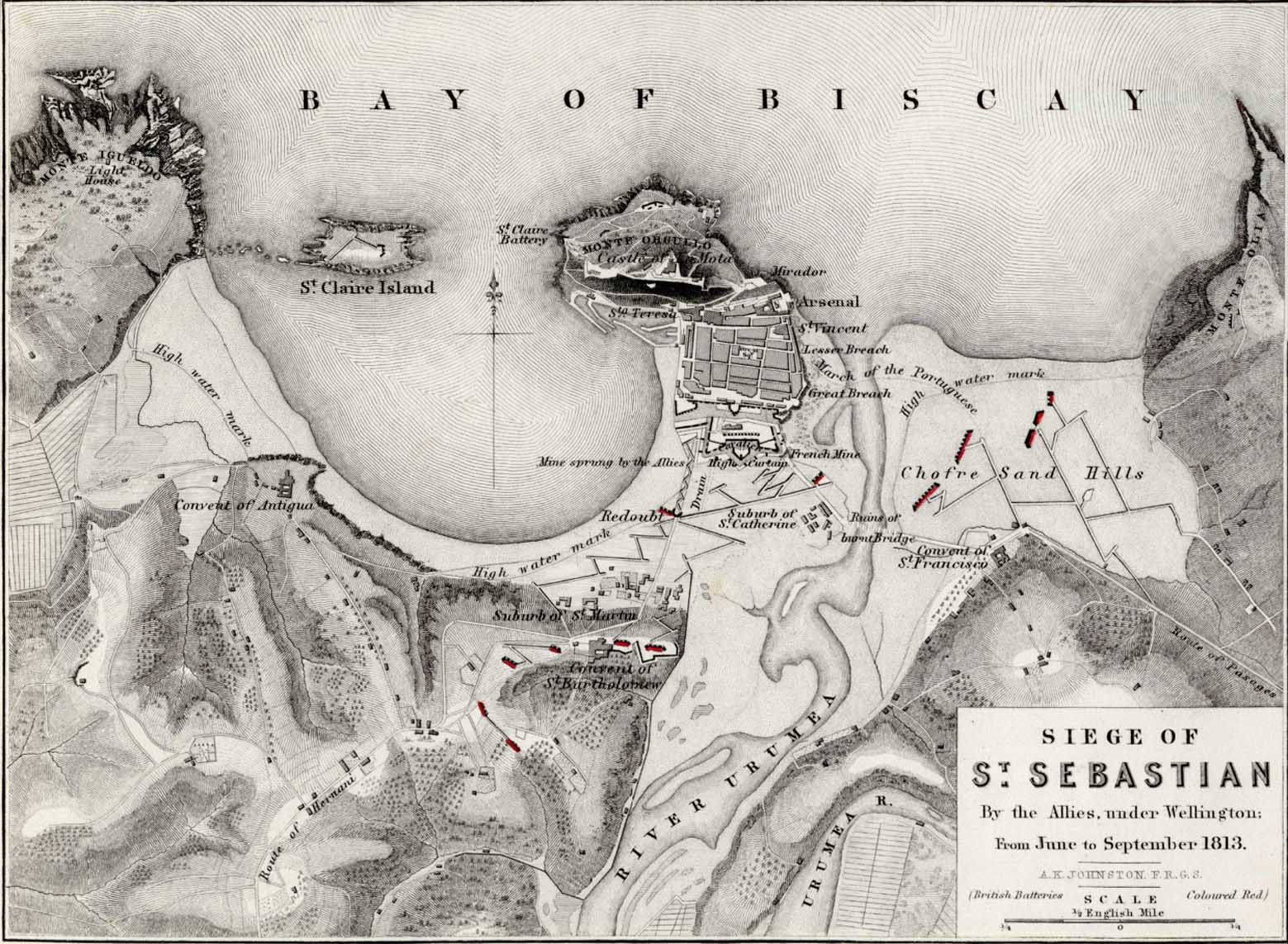
|
|
|
The so-called centenary monument was erected in 1913, to
commemorate the liberation of the town at the end of the siege. It was located
at the "Alderdi
Eder", in front of the town hall. The various groups of statues
commemorated different eras of the town's history. Unlike the
Vitoria, Porto or Lisbon monuments, it was not only a memorial for the Spanish "War
of Independence". Nevertheless, it was dismantled as soon as 1924, "because
it's presence clashed with the surroundings"
http://www.euskomedia.org/aunamendi/19050 and the various pieces were used
in smaller monuments in town.
Queen Maria-Christina's (wife of king Alphonso XII) statue was the work of Diaz Bueno and was destroyed in 1936, at the beginning of the Civil War (in order to make ammo - some say).
The British monument, using the statues between the arrows
on the picture above right, was inaugurated on 28 September 1924.
http://emiliolatorre.blogspot.com/2009_11_01_archive.html
|
|
|
INGLATERRA NOS CONFIA SUS
GLORIOSOS RESTOS
NUESTRA GRATITUD VELARA SU ETERNO ROPOSO
ENGLAND CONFIDED TO US
THEIR HONOURED REMAINS
OUR GRATITUDE WILL WATCH OVER THEIR ETERNAL REPOSE
When one considers the very bad state of the memorial, one can only think that the Spaniards must be VERY ungrateful people...
Before the inauguration of the monument in 1924, the ashes of the British soldiers killed during the siege of 1813 had been placed there, joining those of the Officers killed during the 1st Carlist War (1836-1838). Or maybe these had been buried there because there were already some British soldiers from 1813 there. However, there is no clear indication where these are buried.
|
|
|
|
in memory of the gallant british soldiers who gave thier lives for the greatness of their own country and for independence and liberty of spain |
a la
memoria de los valientes soldados britanicos que dejaron la vida por la grandeza de su paÍs y por la independencia y la libertad de EspaŇa |
HONOR A LOS HEROES QUE SOLO DIOS CONOCE
1808-1814
1836-1838
HONOUR TO THE HEROES KNOWN ONLY TO GOD
If you compare with the pictures taken in 1992 here on the website of the
Portsmouth Napoleonic Society (http://www.pns1814.co.uk/San%20Sebastian.htm
) you can see the monument suffered a lot since then...
No hope for a restoration for the 200th anniversary ?
|
|
|
To the left, in front of the monument, one should find a commemorative plate for the Officers of the Royal Engineers:
- Lt-Colonel Sir Richard Fletcher
- Captain C. Rhodes
- Captain G. Collyer
- Lieutenant Machell.
Two errors have to be corrected : Fletcher was Lt-Col and not Colonel. It's George Collyer and not Collier. There is a George Collier, but he served in the Coldstream Guards and was killed at Bayonne.
Lieutenant-Colonel Fletcher, who was killed at the siege of San Sebastian,
was the father of the Lines of Torres-Vedras. It is not clear whether it is a
tomb or a cenotaph, and we were unable to locate the exact spot.
According to the Peninsular Roll Call :
- Captain Charles Steech Rhodes, Royal Engineers, became captain on the 1st May
1811. He arrived in the Peninsula in September 1812 and was killed on the 31st
August 1813.
- Captain George Collyer, Royal Engineers, served in the Baltic in 1807; he
became 1st Lt on 1 May 1807, 2 Capt on the 5 March 1812. Arrived in the
Peninsula in August 1813 and was killed at San Sebastian on the 31st August
1813. He is commemorated in the St Mary the Virgin chruch at Wroxham : « SACRED
TO THE MEMORY OF / CAPN GEORGE COLLYER / OF THE ROYAL ENGINEERS / WHO AT THE
SIEGE OF SAN SEBASTIAN / AFTER HAVING, WITH COURAGE AND JUDGEMENT, / LED ON A
COLUMN TO THE ATTACK, / WAS KILLED IN THE BREACH / ON THE 31ST DAY OF AUGUST
1813 / IN THE 25TH YEAR OF HIS AGE. / WEEP NOT ! HE DIED AS HEROES DIE, / THE
DEATH PERMITTED TO THE BRAVE : / MOURN NOT ! HE LIES WHERE SOLDIERS LIE, / AND
VALOUR ENVIES SUCH A GRAVE. / YET, NE’ER HAS FAME ALONE, AFFECTION’S TEAR
SUPPRESS’D, / GRIEF TURNS FROM GLORY’S FIELD, TO HIS CELESTIAL REST. »
- 1st Lieutenant Lancelot Machell, Royal Engineers, became 1st Lt on the 1st May
1811. He served in the Peninsula from December 1812 until July 1813. Killed at
San Sebastian on the 25 July 1813.
In front of the commemorative plate for the unknown, there is the gravestone of John New..., David Howard, John Gates, Beng. Smith et James Keates. These are probably British officers the British Auxiliary Legion during the 1st Carlist War (1836-1838). The "cementerio de los Ingleses" also contains the tombs of Adjudant F.C Ebsworts, Colonel Oliver de Lancey (1836), Colonel William I.M. Tupper (05/05/1836), of the Spanish Mariscal de Campo (Major General) D. Manuel Gurrea (+ 29/05/1837), as well as the tomb of the wife and daughter of a J. Callender (1836-1837).
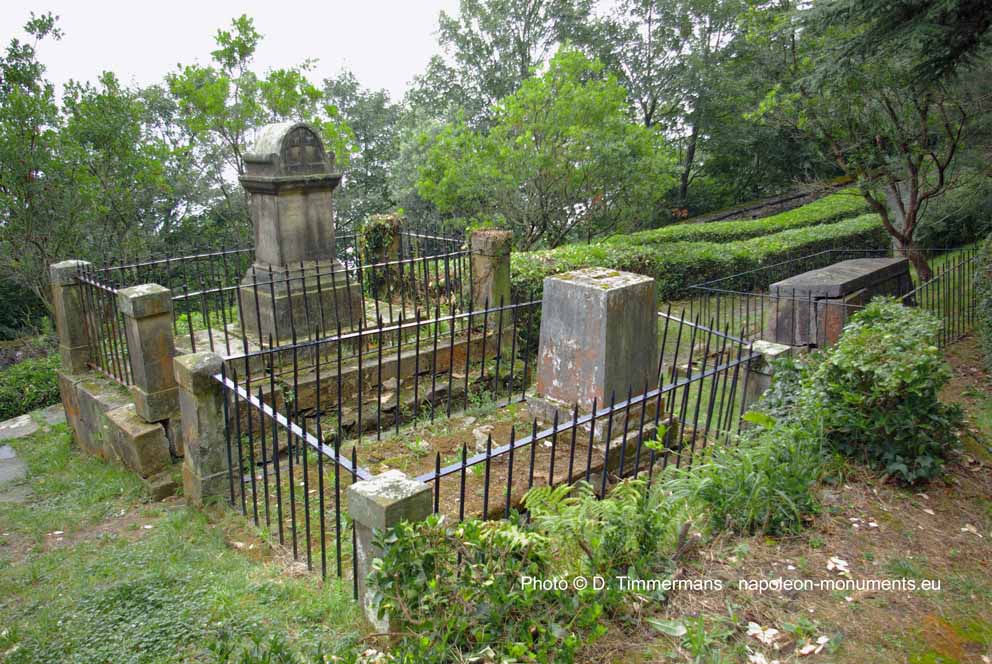
From left to right, the tombs of Tupper, de Lancey and Callender family.
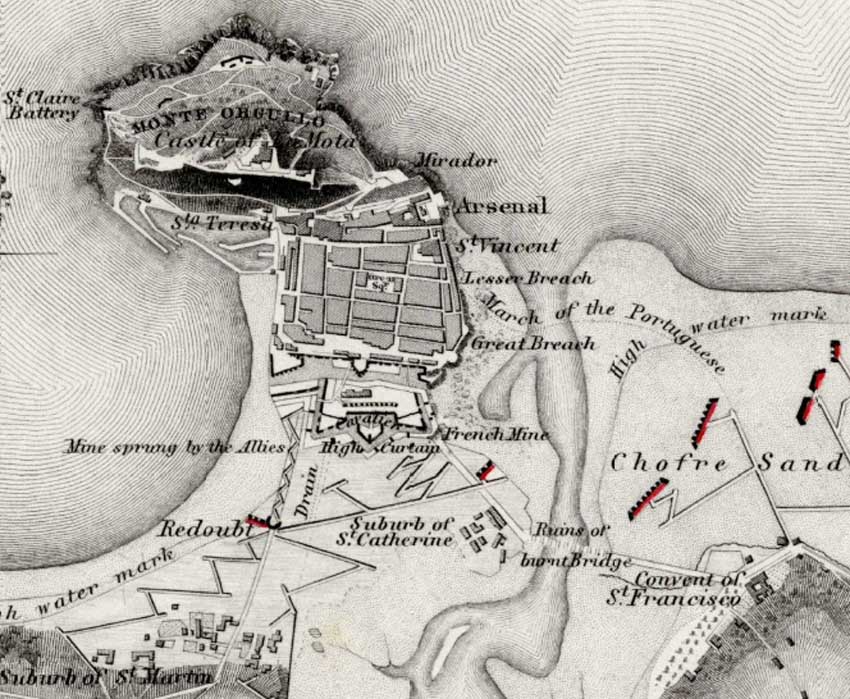
25/07/1813 Maya
07/30-01/08/1813 Sorauren
13/08/1813 Irun - San Marcial
07/10/1813
Vera da Bidasoa
10/11/1813 Nivelle - Ascain - St-Pée-sur-Nivelle -
Amotz
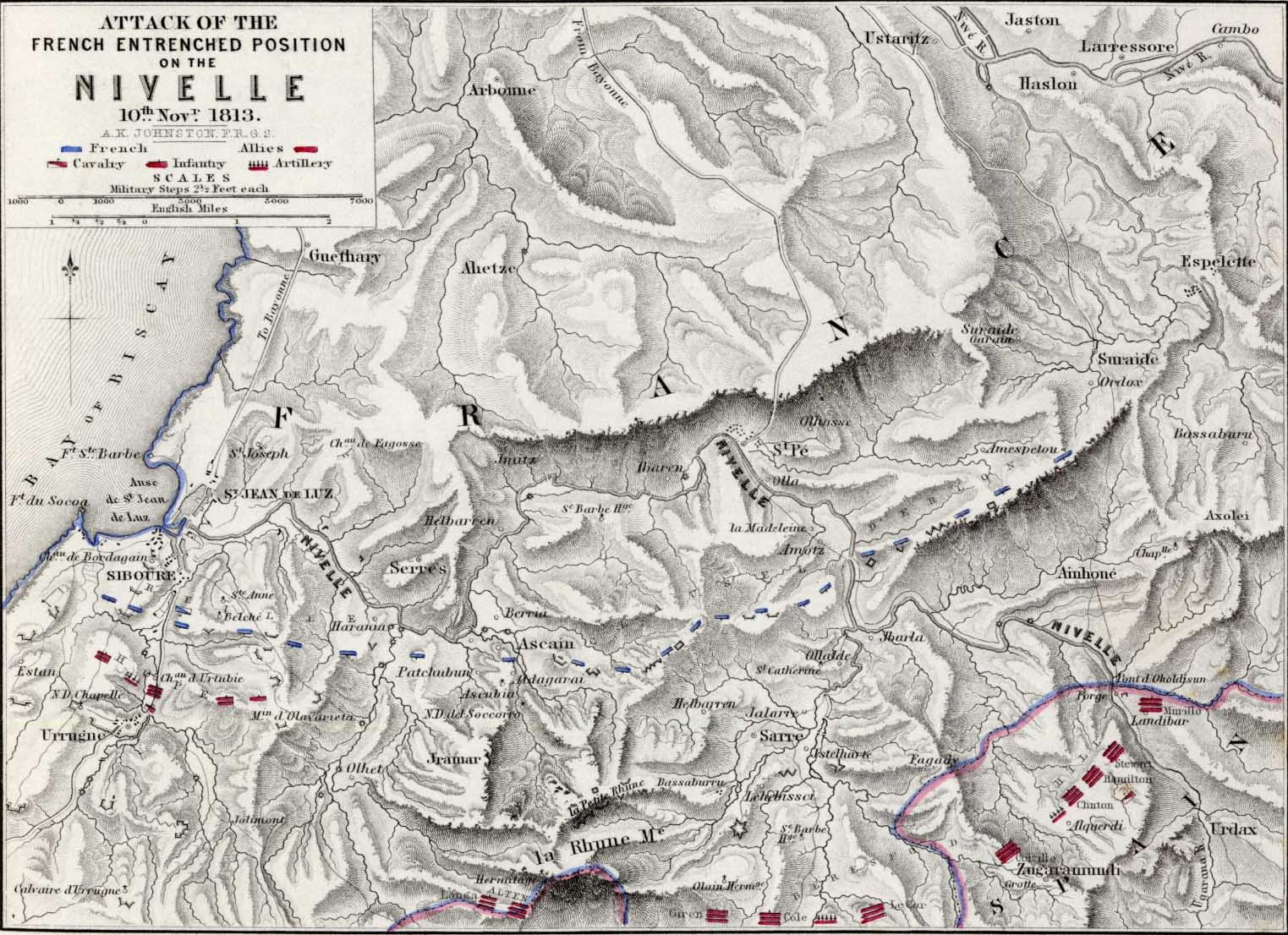
09-12/12/1813 Nive
13/12/1813 Bayonne -Arcangues - Croix de Mouguerre
Maps : Johnston, Alex. Keith, Atlas to Alison's History of Europe, William Blackwood and Sons, Edinburgh and London, 1848 and 1850.
page still in the making